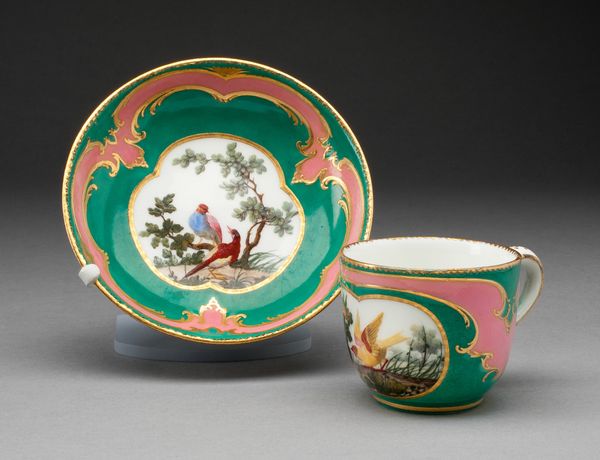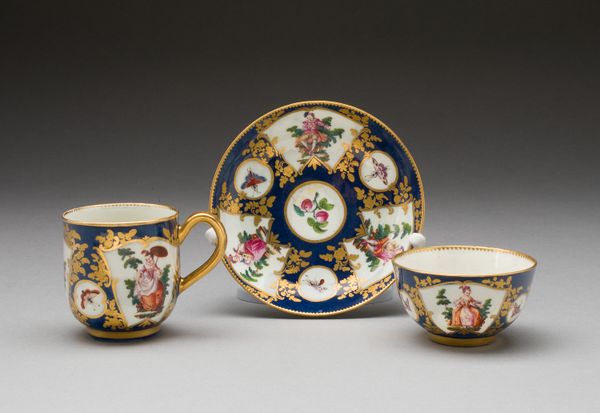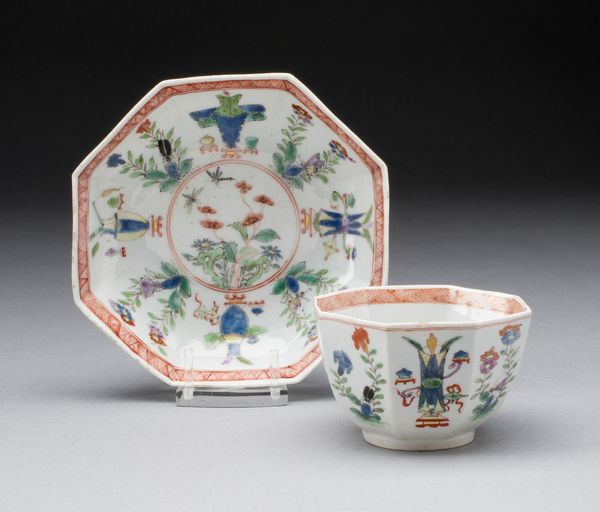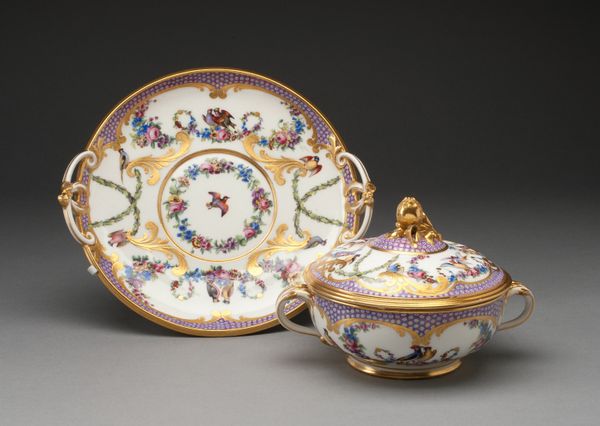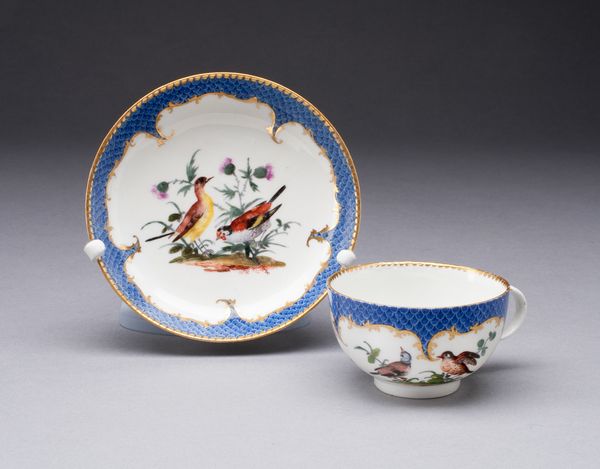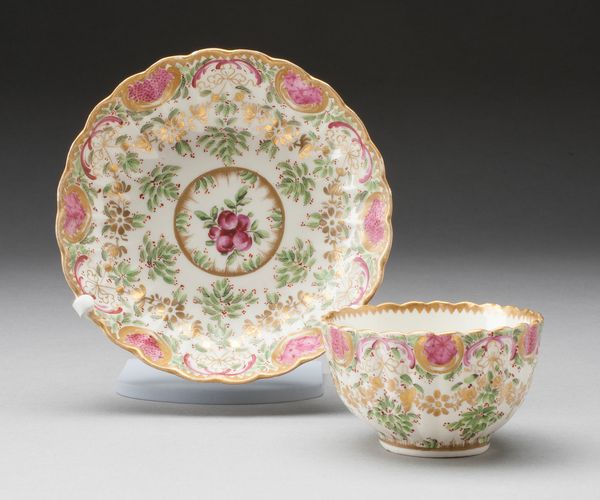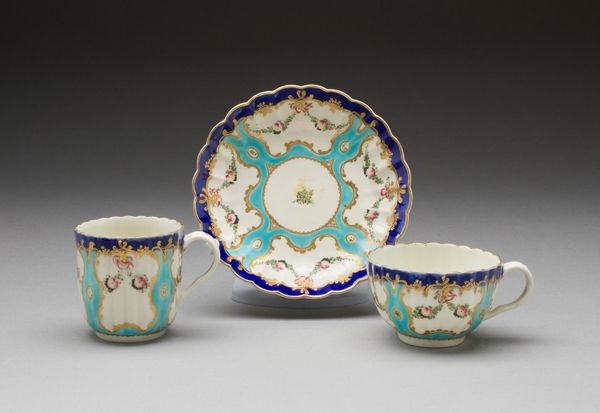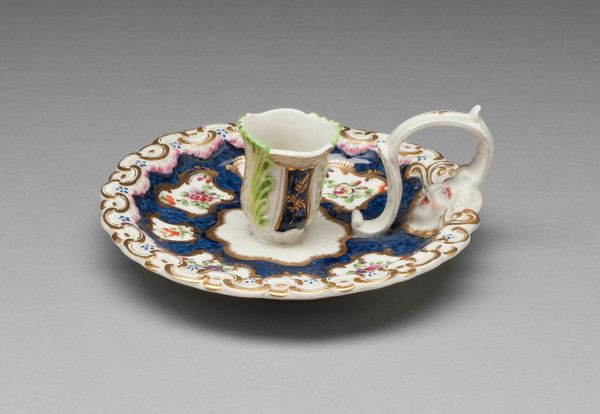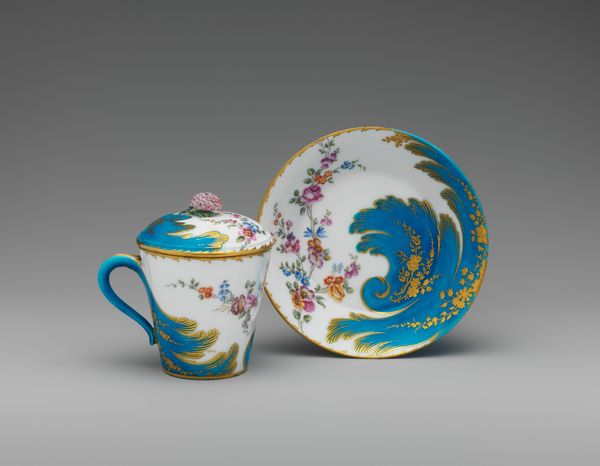
ceramic, porcelain
ceramic
porcelain
ceramic
genre-painting
decorative-art
rococo
Dimensions: Cup: 6.4 × 9.8 × 7.8 cm (2 1/2 × 3 7/8 × 3 1/16 in.); Saucer: 3.2 × 13.5 cm (1 1/4 × 5 5/16 in.)
Copyright: Public Domain
Curator: Here we have a “Cup and Saucer,” a beautiful porcelain piece crafted by the Manufacture nationale de Sèvres in 1766. Editor: My first impression? This is total Rococo fantasy! So precious it practically hums. Makes you want to pour yourself a cup of something floral and get lost in powdered wigs and gossipy whispers. Curator: It certainly embodies the aesthetic sensibilities of the time. Let’s unpack that a little. Beyond the visual allure, this cup and saucer exemplify the intersection of artistic production and social status in 18th-century France. Porcelain like this wasn't just for drinking tea; it was a signifier of wealth, taste, and participation in elite social circles. Editor: Totally! Look at the painting! What do we call this, *genre*? Everyday folk having picnics...it's like a snapshot of the "good life". That gilded tracery makes me swoon. Every detail feels calculated to convey…opulence? Curator: Opulence and a carefully constructed vision of pastoral leisure. These scenes were not documentary but idyllic fantasies, often masking social inequalities and political tensions with sentimental imagery. Notice the placement of the central image on both the cup and saucer – this is carefully planned to allow for ideal viewing. Editor: You're saying the aristocracy probably *didn't* care that actual everyday people lived anything like that. More about showing the pretty dreamscape than addressing real needs? Curator: Exactly. Consumption and display of these items contributed to maintaining the social hierarchy. Who got to possess and enjoy these luxury goods was tightly bound to power structures of the time. It wasn't just about owning a cup, it was about being seen owning this particular cup. Editor: Well, even knowing its background, there's something undeniably cheerful about its execution. It practically dares you not to smile. I wonder about the hands that made each stroke and turn? And that glaze... almost glass-like. What story could it whisper of the world as it was taking form. Curator: Indeed, and hopefully through this brief analysis we might become more mindful about the values we cherish and those we consciously discard. The decorative arts allow us to understand and unpack some intricate connections between aesthetics, power, and social constructs. Editor: Absolutely, I might stick to my usual mug for the moment, but next time I drink my tea, I might just remember to see it, truly see it! To let its history color my thoughts in turn.
Comments
No comments
Be the first to comment and join the conversation on the ultimate creative platform.
